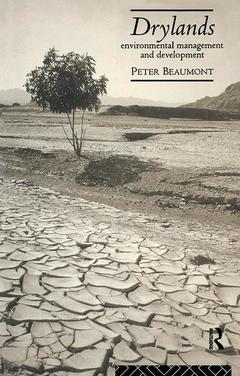Drylands Environmental Management and Development The Natural Environment: Problems and Management Series
Auteur : Beaumont Peter

Drylands, which cover over half the world's area, have witnessed rapid development, exploitation and change with the discovery of mineral reserves, urbanization and population growth. Environmental management is critical to the conservation and sustainable use of resources.
This comprehensive text offers a systematic study of the physical nature of drylands and the history of human response to and uses of these harsh landscapes. Detailed case studies, including urban as well as pastoral drylands from California to Soviet Central Asia, the Middle East, the Sahara and Australia, contrast different management approaches and problems.
Date de parution : 06-2017
13.8x21.6 cm
Thème de Drylands :
Mots-clés :
Sea Water; arid; Arid Zone; zone; Acre Foot; environments; Western Sahara; alluvial; Tonnes; fans; Air Pollution; irrigated; Tigris Euphrates Lowlands; area; South West USA; irrigation; Colorado River; water; Central Arizona Project; resource; FEB; Salt Lake; Dryland Environment; Animal Numbers; Irrigated Agriculture; National Water Carrier; Aral Sea; Sewage Sludge; High Plains; Zayandeh River; Middle East Economic Digest; Moisture Content; Wadi Ziqlab; Texas Water Plan; South Coast Air Quality Management



